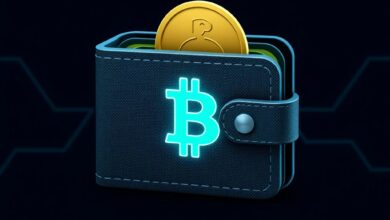How to generate your own crypto wallet address

Begin with choosing a reliable platform that supports the generation of unique identifiers on the blockchain. This process is straightforward yet crucial for ensuring robust security and accessibility to your assets. Opt for well-reviewed software or hardware solutions that prioritize user experience and transparency.
Following selection, proceed to generate cryptographic keys. These keys are pivotal; they grant access and control over your digital funds. Ensure you safely store both public and private keys in separate, secure locations to mitigate risks associated with unauthorized access.
Prioritize security measures throughout the setup process. Enable two-factor authentication where available, and consider using cold storage options for long-term holdings. Regularly update your software to protect against vulnerabilities while maintaining awareness of potential phishing scams targeting unwary users.
This guide will walk you through essential steps, providing clarity on each phase of establishing your blockchain identifier while emphasizing security as a foundational element in managing your digital assets effectively.
Choose a Wallet Type
Selecting the right type of storage for your tokens is critical. Consider options like hardware, software, or paper solutions based on your needs. Hardware devices offer enhanced security by keeping private keys offline, minimizing risks associated with online threats. Software wallets provide convenience and accessibility but require vigilant security practices.
For long-term holding, hardware solutions are advisable. They safeguard assets from malware and hacking attempts due to their offline nature. Conversely, if frequent transactions are anticipated, a software wallet may be more practical but ensure robust security measures are in place.
Paper wallets present an alternative; they involve printing the public and private keys on paper. This method eliminates digital vulnerabilities but necessitates careful physical storage to avoid loss or damage.
Each option has its unique advantages and drawbacks regarding usability and safety. Assess your transaction frequency and risk tolerance before deciding on the appropriate type of storage for your blockchain assets.
Select a Reliable Provider
Prioritize security features and user reviews when choosing a provider for your wallet setup. Verify the company’s reputation by checking their history in the blockchain community and any past security incidents.
Ensure that the service offers comprehensive support for private keys management, as this is critical for safeguarding your assets. Look for providers that implement strong encryption methods to protect sensitive information.
Assess whether they provide multi-signature options, adding another layer of defense against unauthorized access. A reliable provider should also have a transparent fee structure, allowing you to understand costs associated with transactions.
Compatibility with various cryptocurrencies is essential; ensure the service supports the specific coins you intend to store. Additionally, investigate their backup and recovery procedures to secure your wallet against potential data loss.
Finally, test their customer support responsiveness before committing. A trustworthy provider will offer timely assistance and clear communication channels to address any concerns that may arise during your experience.
Generate Your Wallet Address
To generate a wallet identifier, utilize a reliable application or platform that supports blockchain technology. Most wallets offer a straightforward setup process, prompting you to create an account and secure it with a strong password.
Ensure you enable two-factor authentication for enhanced security during the setup phase. This adds an additional layer of protection, making unauthorized access significantly more difficult.
After completing the initial steps, navigate to the section dedicated to generating your unique identifier. Typically, this will involve clicking on a button labeled “Generate” or “Create New Address.” The system will produce a unique alphanumeric string that serves as your new address.
Keep your private keys confidential and store them in a secure location. Losing access to these keys can result in permanent loss of funds associated with the generated address. It’s wise to back up this information using encrypted methods.
This guide ensures you’re not only equipped with an address but also emphasizes maintaining robust security practices throughout the process. Always stay informed about the latest developments in blockchain technology to safeguard your assets effectively.
Secure Your Private Key
Store your private key offline to protect it from potential threats. Use hardware wallets or air-gapped devices for maximum security.
- Never share your private key with anyone.
- Consider using a password manager that supports encrypted storage for additional protection.
- Create backups of your key and store them in multiple secure locations, like safe deposit boxes.
Regularly update your security practices. Use two-factor authentication wherever possible to add an extra layer of defense against unauthorized access.
- Utilize strong, unique passwords for your accounts related to the blockchain.
- Avoid accessing wallet services on public Wi-Fi networks.
- Stay informed about phishing attacks and other scams targeting digital assets.
By taking these steps, you significantly reduce the risk of losing access to your funds and ensure that your keys remain confidential and protected at all times.
Test Your Wallet Functionality
Verify the setup by sending a small amount of cryptocurrency to the generated address. This initial transaction ensures that everything is functioning correctly and that you can receive funds without issues.
Check the blockchain for confirmation of the transaction. Use a reliable block explorer to track the status. This will provide insights into whether your address is active and capable of processing transfers.
After receiving funds, attempt to send a small amount back to another wallet. This action tests both sending and receiving capabilities, confirming the wallet’s reliability in handling transactions.
Ensure adequate security measures are in place during these tests. Enable two-factor authentication if available, and monitor for any unauthorized access attempts. Regularly checking your balance and transaction history contributes to ongoing security.
Document any errors or issues encountered during testing, as this information can be valuable for troubleshooting with your provider or seeking community assistance.







